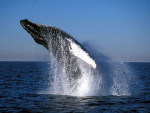Documental: Las montañas/ Mountains
Horario: 6:00- 7:00pm
Entrada Libre
Las Montañas
Este documental se centra en las montañas. Los principales rangos se exploran con fotografías aéreas. Etiopía Erta Ale es el volcán activo mas grande, durante más de 100 años. En las tierras altas cercanas, geladas (el único primate cuya dieta es casi en su totalidad de la hierba) habitan laderas escarpadas cerca de cinco kilómetros (3 millas) hacia arriba, en las tropas que son 800-fuerte: el más numeroso de su tipo. Junto a ellos vive el peligro crítico Walia ibex, y ambas especies se turnan para actuar como puesto de observación para los depredadores lobos etíopes.
Los Andes tienen el clima más volátil y las llamas se muestran soportando una tormenta de nieve. Las cumbres alpinas están siempre cubiertos de nieve, además de la del Cervino, que es demasiado pura para permitir que se asiente. Los cachorros de oso Grizzly emergen de su guarida por primera vez en las Montañas Rocosas, mientras que los habitantes del Himalaya incluyen celo markhor, águilas de oro cazan grúas migrantes y el extraño leopardo de la nieve. En el extremo oriental de la cordillera, el panda gigante no puede hibernar debido a su mala nutrición de bambú. También se muestra es el mayor glaciar de montaña de la Tierra: el Baltoro en Pakistán, que es de 70 kilómetros (43 millas) de largo y visible desde el espacio. Los Diarios del Planeta Tierra demuestra la dificultad de obtener la primera imágenes de los leopardos de las nieves:. Un proceso que tomó más de tres años.
Mountains
All the main ranges are explored with extensive aerial photography. Ethiopia´s Erta Ale is the longest continually erupting volcano— for over 100 years. On the nearby highlands, geladas (the only primate whose diet is almost entirely of grass) inhabit precipitous slopes nearly five kilometres (3 mi) up, in troops that are 800-strong: the most numerous of their kind. Alongside them live the critically endangered walia ibex, and both species take turns to act as lookout for predatory Ethipian wolves.
The Andes have the most volatile weather and guanacos are shown enduring a flash blizzard, along with an exceptional group sighting of the normally solitary puma. The Alpine summits are always snow-covered, apart from that of the Matterhorn, which is too sheer to allow it to settle. Grizzly bear cubs emerge from their den for the first time in the Rockies, while Himalayan inhabitants include rutting markhor, golden eagles that hunt migrating demoiselle cranes, and the rare snow leopard. At the eastern end of the range, the giant panda cannot hibernate due to its poor nutriment of bamboo and one of them cradles its week-old cub. Also shown is the Earth’s biggest mountain glacier: the Baltoro in Pakistan, which is 70 kilometres (43 mi) long and visible from space. Planet Earth Diaries demonstrates the difficulty of obtaining the first ever close-up footage of the snow leopards: a process which took over three years.



